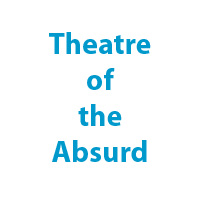What is Theatre of the Absurd?
The term 'Theatre of the Absurd' is applied to a number of dramatic works which share the view that the human condition is essentially absurd by which is meant a lack of meaning in life.

Minimal setting, repetitive dialogue, the theme of the meaninglessness of life are the hallmarks of the theatre of the absurd. Eugene Ionesco and Samuel Beckett are the major playwrights behind the movement.
Theatre of the absurd was a French theatrical movement. This movement was influenced by existentialist philosophy. It highlighted the meaninglessness and irrationality of human existence. Circularity and non-meaning are at the heart of this school of theatre. Man is seen as an isolated existence who is cast into an alien universe. Human life is seen as possessing no truth and meaning and the idea of emptiness and nothingness is highlighted. Ionesco comments, “cut off from his religious, metaphysical and transcendental root, man is lost; all his actions become senseless, absurd, useless.” He says that people drowning in meaninglessness can only be grotesque, their suffering can only appear tragic by derision. Beckett’s Waiting for Godot and Endgame exemplify this theme. His Endgame and Waiting for Godot project irrationalism, helplessness and absurdity of life in dramatic forms that reject realistic settings, logical reasoning or a coherently evolving plot. The dialogue used by the characters is repetitive and minimal, so characters cannot communicate anything significant. Nothing significant happens in the play. The confinement of the characters shows the helplessness in their condition. The situation is highly comic as moods of sadness and tragedy are mixed with moods of fun and humor. The line, “Nothing is funnier than unhappiness” highlights this aspect.
Published on 13 Oct. 2014 by Kedar Nath Sharma
